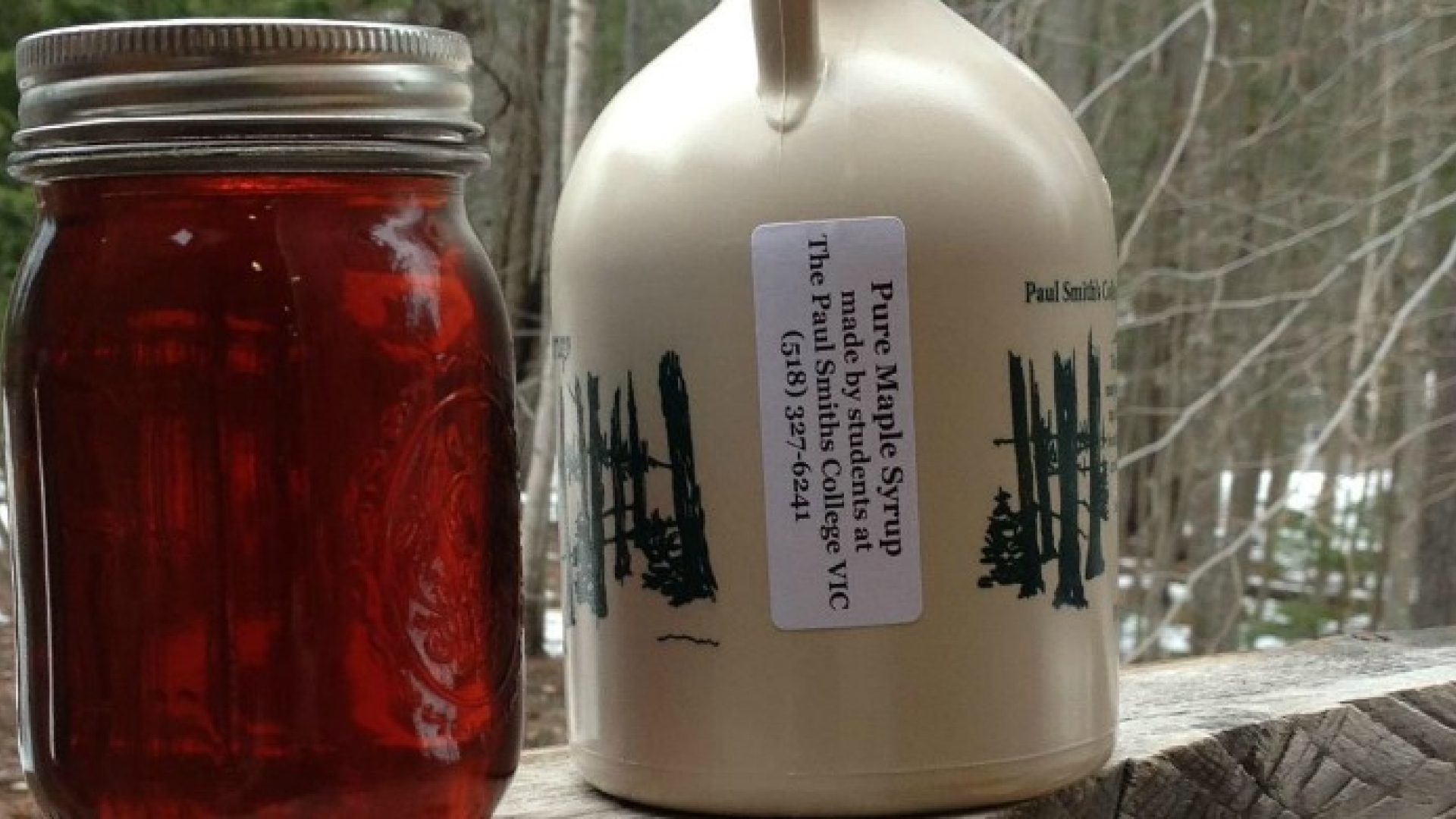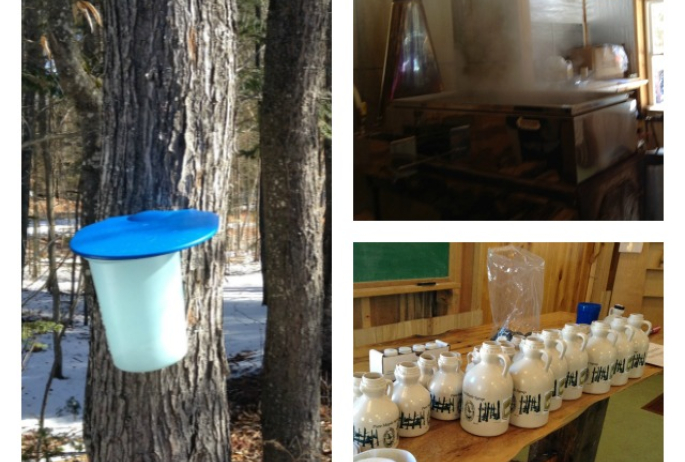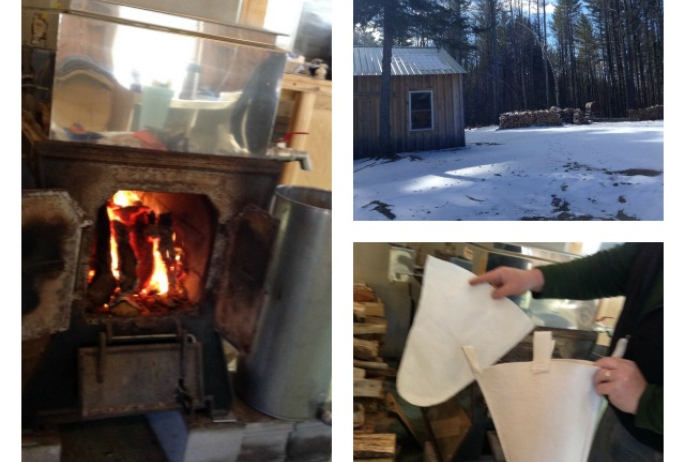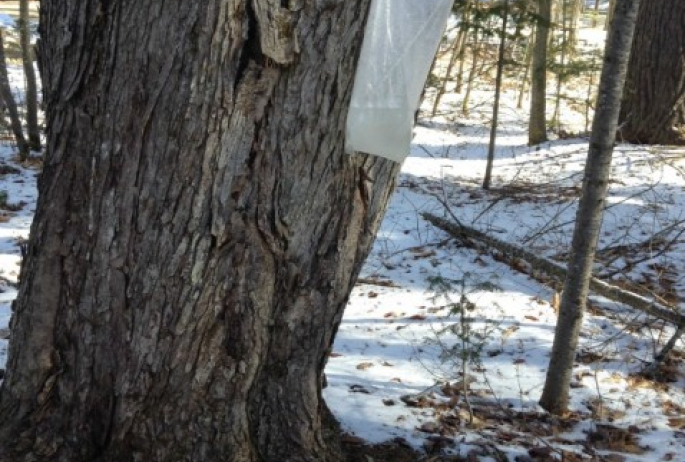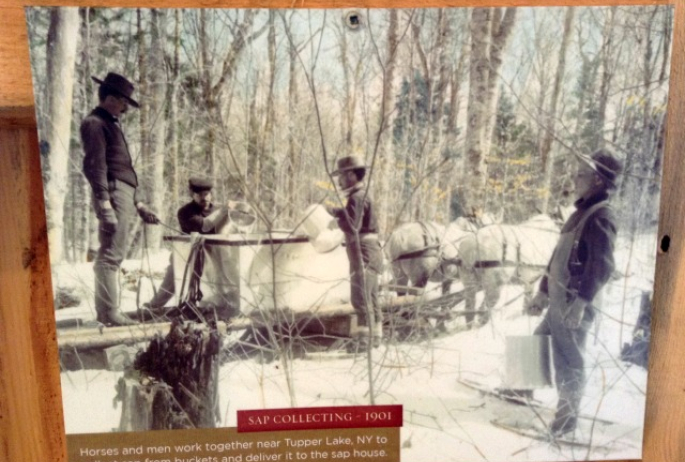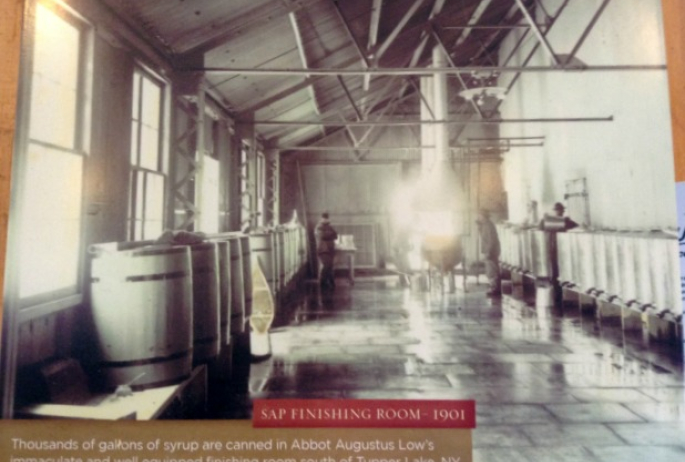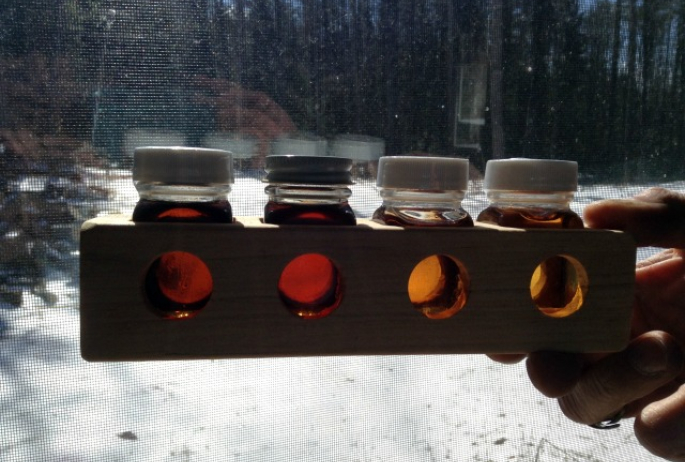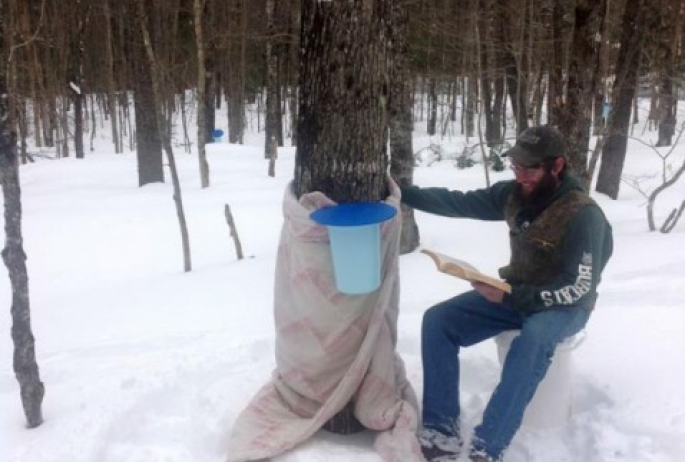The sap is flowing in Saranac Lake! The Paul Smith's Visitor Interpretive Center has a classic maple syrup operation on the premises. I visited for the first Maple Syrup weekend of the season, but no worries if you missed out - there's still time to plan on visiting for the second weekend! This year it will take place on April 2 & 3, 2016.
The colder areas of the North American continent, on the Atlantic side, is where sugar maples thrive. It takes a real winter for the sap to be stored, and then, to flow. Prized by the native Americans, beloved of lumberjacks, and perfect for pancakes, maple syrup is a completely natural food.
It is also incredibly versatile, with all kinds of culinary uses.
ancient technique evolves
It is the taste of pre-history. As long as there have been maple trees living with people, the people have been boiling down the sap to sweeten their food and drink.
For centuries, it was a diagonal slash in the bark of a tree, with a birchbark sack hung beneath it to catch the sap. Then hot stones were placed in the sack to boil off the water. With the advancement of better techniques, the birchbark sack yielded to the galvanized pail and the hot stones were replaced by the wood-fired boiler.
This was the state of the art for almost two hundred years.

Now that technology has been supplanted by the plastic bag or pail, and much of the water is taken away by a reverse osmosis process before the boiling. The Paul Smith's Visitor Interpretive Center is a wonderful place to experience the entire delightful process. Certain aspects have been upgraded with modern techniques, but they still have a wood-fired sugarhouse.
They believe that small batch processing and using certain old-fashioned techniques makes for a tastier product. Since they have won the local tasting competition for the last two years, they must have a point.

The maple sap cooking down in the sugarhouse sends out steam that is so sweet and delicious it can set our skin tingling. Once smelled, it's a scent never to be forgotten.
tree to sugarhouse
"That's another advantage of the old-fashioned way," said Visitor Interpretive Center sugarmeister, Brian McDonnell. "We lose a bit of sugar in the steam, but we feel the scent is part of the experience."
I am here as part of the Sap to Syrup Workshop, a class held each Saturday morning of the Maple Syrup Weekends. Some are here to learn how to manage their own sugarbushes — the term for a stand of maples, especially sugar maples. Some are here to understand how the whole fascinating process works.
Brian demonstrates the proper drilling method, and how to (gently!) pound the tap into the tree. Their main sugarbush is about a mile down a trail, but they also tap trees right outside the sugarhouse.

We look up to check the crown of the tree; a broad and spreading system of branches indicates a healthy tree, which will offer a lot of sap. "I've had people tap dead trees," Brian says. "Another reason to look up."
There used to be a galvanized pail to hang on the tap, but this has been upgraded with plastic buckets, or even winebags, as seen above. The fresh sap is about 2% sugar at this point, and has nearly the consistency of water. This must be boiled down to about 67% sugar to form syrup.
So it takes a lot of sap.

At one time, horses dragged sleds through the sugarbushes, while workers poured the sap into collection containers. The latest innovation is a system of tubes which connects all the taps in a large sugarbush into a large collection container. This uses a siphon action to transport the sap, instead of gravity.
Now it is an all-terrain vehicle which transports the containers.
Sugar maples are not the only trees which can be tapped, but they are the best. Red maples have a shorter sap season, and have a slight bitterness in taste. Birch trees offer abundant sap, but are much lighter in both taste and sugar content.

"We're ready for the sock," Brian announces, having checked the syrup at the faucet end of the boiler. The end where the sap goes in has many fins, which offers more surface area to boil off the water. At the other end, thanks to a slight tilt to the boiler, the heavier sap collects. The "sock" is actually a paper filter placed in a densely woven cotton holder.
Using the "sock" filters out niter, or "sugar sand," an accumulation of minerals and nutrients that forms as the sap is boiled. Some like the heavier mineral content of unfiltered syrup, but much of this boil will be for sale in the gift shop.
Most people expect a clear product when they pour it on their pancakes.
a unique ingredient
Maple is a taste unlike any other. Between the popularity of Paleo eating, with its emphasis on minimally processed food with a long pedigree, and many chefs discovering the wonderful possibilities of maple as an ingredient in sauces, glazes, salad dressings, and desserts, maple is more popular than ever.
That pancake syrup is "Golden Color, Delicate Taste." This early season sap is what most people think of when they imagine maple syrup, but it is only the first of four grades, which have been recently changed in both name and composition to encourage people to try different ones.
They are now all Grade A.

The next darkest color is "Amber Color, Rich Flavor" and is produced mid-season, with a more complex flavor. "Dark Color, Robust Flavor" is richer still, while "Very Dark, Strong Flavor" is the most robust, latest season syrup. Once sold to candy producers as a flavoring, foodies have discovered how well it subs for molasses in barbeque sauce and cookie baking.
Since I am among serious maple fans, the various grades are discussed with enthusiasm. Glazing salmon, sweetening a mole sauce, and even brewing beer — there are dozens of flavor ideas. Many of them are used by Paul Smith's culinary students during their events.
The VIC also offers a wonderful gift idea for serious maple fans: Adopt a Sugar Maple.

Maple fans can support their own tree, which covers the tapping, the processing, and educating Maple Syrup Interns. At the end of the season, there's a quart of real maple syrup for the adoptive "parents."
One year, during a spell of extreme weather, a maple tree's parents emailed with concerns about their tree. They were sent the above photograph, showing how the tree got tucked in with a bedtime story each night.
Now that's some special maple syrup.
Find some snug lodging. Get breakfast in a place which offers real maple syrup. Enjoy all of our attractions. Ask about adopting a tree at the VIC.
